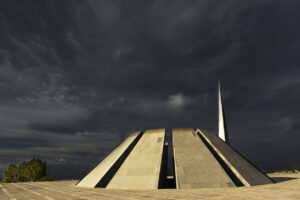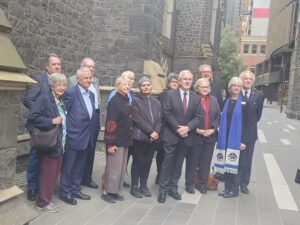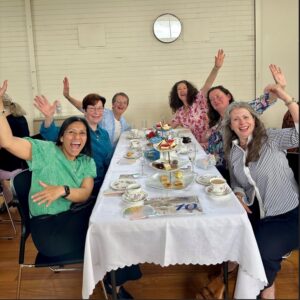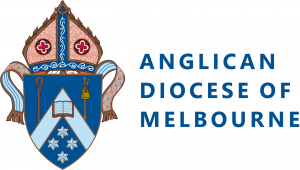Anglicanism can learn a lot from the Charismatic movement, writes Rachael Lopez
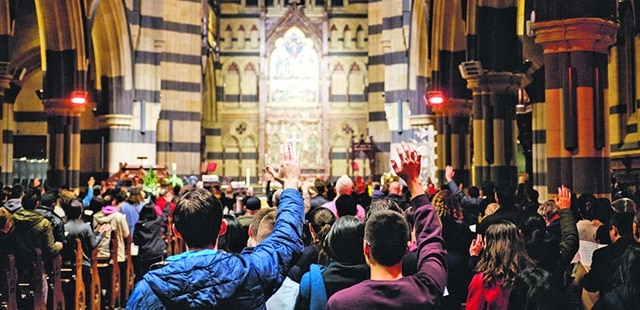
By Rachael Lopez
5 August 2019
The Anglican Church can learn a great deal from the Charismatic movement and be inspired by its creativity and entrepreneurialism, writes Rachael Lopez, who spent a year at Lambeth Palace as part of the Archbishop of Canterbury’s Community of St Anselm and describes herself as a “Charismatic Anglican”. She writes in response to Melbourne priest Dr Mark Durie’s article in May TMA on Pentecostalism in Australia.
In 2007, Today Tonight attempted an exposé about the fact that four of the eight finalists on Australian Idol that year were Hillsong members, and one was a born-again Christian. This was heralded as a deliberate attempt by the church to infiltrate popular culture by mass voting in Pentecostals. As well as being factually incorrect (three were not Hillsong members but part of another Pentecostal church) they failed to see that this common thread was not a conspiracy, but a reflection of the fact that in these churches young people are able to flourish as musicians.
Unfortunately, the misguided fear of Pentecostals taking over extends further than current affairs shows to the church itself. The Revd Dr Mark Durie picked up on this fear in his article “The Pentecostals are coming. Are we ready?” in the May edition of TMA. But his assessment was a positive one which invited Anglicans to consider what the Pentecostal movement is about, and what it means for Australian Anglicans. He praised the Pentecostals for their capacity to embrace culture and plant churches, and contrasted the growth of Pentecostalism with the decline of Anglicanism. Perhaps, as I discovered in England, it’s possible to have the best of both worlds in charismatic Anglicanism.
Coming to Australia in waves since the early 1900s, the Pentecostal movement has generated many denominations and independent churches but also created a particular meaning of the adjective “charismatic” that can be attached to any church or denomination. The latter has been slow, especially in Anglican churches. When John Wimber, the founding leader of the Vineyard charismatic movement, came to Australia for a series of conferences in 1990, the pushback from Anglicans was swift. Today, many Anglicans continue to approach any hint of the charismatic with suspicion and cynicism, whether it’s charismatic in theology (speaking in tongues, healing, prophecy) or just charismatic in style (expressive music, engaging preaching).
It seems strange now, but my one hesitation in moving to Lambeth Palace to join the Community of St Anselm was thinking I would lose my charismatic identity. I had the idea that somehow Anglicanism in its purest form was English and unchanged since the 17th century, and that Lambeth Palace was its portal. However, my assumptions about the entrenched nature of Anglicanism were proved wrong. I discovered that my identity as a charismatic Anglican was affirmed and stretched at Lambeth: through the teaching of a Pentecostal Cambridge scholar who laid hands and anointed us as theologians; and through worship nights in the crypt where we received ministry for healing.
This should not have surprised me, because the Archbishop of Canterbury, Justin Welby, self-describes as charismatic. In our time at Lambeth, I saw how his spirituality shaped his leadership. On one occasion he asked us to prophesy over a group of Canterbury ministers on a mission trip. Also, his bold evangelistic initiative (with the Archbishop of York) Thy Kingdom Come is a very charismatic way to see the dynamism of Pentecost unleashed on the worldwide Anglican Communion.
While every other Church of England diocese is shrinking, London is growing – in fact, it’s one of the few places in the world where there is growth in the Anglican Church. This is in part thanks to the leadership of the former Bishop of London, Richard Chartres, who retired in early 2017 after 20 years in the role. I attended his talk at Lambeth Palace on Church Growth, where he noted: “I have always sought to balance active support for new ways of doing things with an emphatic advocacy of the tradition of the Church.” Bishop Richard has refused to shut churches down – often against all advice to do so. He preferred to see the church revived through creative church planting methods of repotting or replanting. Part of the London Diocese’s 2020 vision was seeking to be more creative in reaching new people and places in the power of the Spirit. This is the entrepreneurialism that Mark Durie wrote about as a feature of the Pentecostal movement and adopted by Charismatic Anglicans.
It takes creativity to bridge cultural, generational and ethnic divides in sharing our faith. One example is the Alpha Course which was started by a curate at Holy Trinity Brompton, the home of charismatic Anglicanism in the UK. Now, over 26 million have participated in Alpha around the world and in Australia, we just celebrated 500,000 attendees. Every few years, the course has been remade, and recently the new Alpha Film Series features interviews and stories from around the world. It is no longer Nicky Gumbel giving a single talk. This change reflects the need in today’s audience to see diversity in age, gender, race and background. In London, Ric Thorpe, dubbed Bishop of Church Planting and also from Holy Trinity Brompton, has been busy overseeing the planting of 100 new churches by 2020.
Melbourne diocese is also enlarging its entrepreneurial culture. At the 2017 Melbourne Synod, Anglican Ministry Presence legislation was passed, allowing different expressions of the Anglican Church to exist outside the parish structure. Referring to Melbourne’s growth corridor, Archbishop Philip Freier said in his Synod speech: “The Anglican ministry presence we seek to establish in such places will be the work of our pioneers and church planters and the leaders of fresh expression Church, those with the God-given gifts for this demanding type of ministry.” This year, Bishop Kate Prowd, who covers the Oodthenong Episcopate of growth areas of Melbourne and Geelong, has created a working group to explore Church Planting in the diocese. There is no doubt new ministry initiatives are on the horizon.
If we want our churches to be more multicultural and multigenerational, and if we want to see new people come to faith, it will take sacrifice and doing things differently. The first year of Thy Kingdom Come in London, I was in St Paul’s Cathedral which was overflowing with people of all ages and backgrounds. Bishop Richard Chartres preached on boldness from the Holy Spirit, and a charismatic worship band played. As the service progressed, I saw five bishops weaken in their resolve to remain composed. It began with some gentle swaying of the hips, some bopping of the head, a little raising of the hands until suddenly these five bishops were dancing. A blur of magenta spilt out, under the dome and down the aisle.
Rachael Lopez is a writer exploring both ancient and future practices of discipleship and worship. She blogs at www.alivetradition.com

